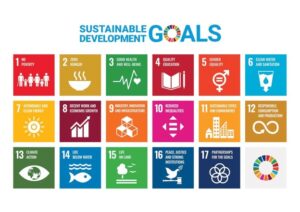What is Sustainable Development?
Sustainability is a difficult concept to define and therefore has multiple definitions. Sustainability is made up of three pillars: economic, environmental and social. Sustainable development is vital for our future as a collective society. The most accepted definition for sustainable development is: development that meets the needs of the present without compromising the ability of future generations to meet their own needs. Sustainable development encompasses many fields of study and is very important for future generations. The UN has a list of 17 sustainable goals to make the world a better place. They range from humanitarian efforts to helping the environment. Sustainable development is something we should all strive for.

Why STEM is Vital for Sustainable Development

Science, technology, engineering and math is important for achieving sustainable development goals. To end world hunger by 2030 is a sustainable development goal in the UN. The international community realizes that science and technology are key to making progress on sustainable development goals. Addressing issues such as pollution, climate change, and water usage will take engineers, scientists, technologists and mathematicians. STEM sparks innovation, which is key to solving sustainability goals. Sustainable development also includes the economy, and the development of the economy is dependent on new products and inventions. Thus, technology and science are a big part of sustainable economic development.
STEM individuals bring skill sets and mindsets that are compatible with sustainable development. All fields of STEM focus on problem solving. This is a big part of sustainable development with big-picture problems. A systems thinking mindset is understanding the entire ecosystem you are working with and how each part affects others. Sustainable development requires solving complicated and interconnected problems using STEM skills.
STEM Education for Sustainable Development
Without a doubt, STEM is beneficial to sustainable development, but sustainability can be beneficial to STEM education as well. Sustainable development incorporates real world problems into STEM education. There are many ways educators can foster sustainable development in the classroom, mainly by incorporating projects and lessons on real world problems. Also, studying sustainability engages students in meaningful teamwork projects and uses green STEM in multiple, or all, subject areas.
STEM Careers in Sustainable Development

STEM can lead to a multitude of careers that involve sustainability. In relation to the environment, environmental scientists are the first thought when it comes to STEM careers, but there are so much more. Conservationists help utilize land without harming natural resources. Environmental technicians and engineers are a big part of sustainable development. The world needs scientists and engineers to come up with innovative and sustainable solutions to problems and products. The possibilities are endless for STEM professionals who want to be a part of sustainable development and make the world a better place!
Written by Olivia Kirven

